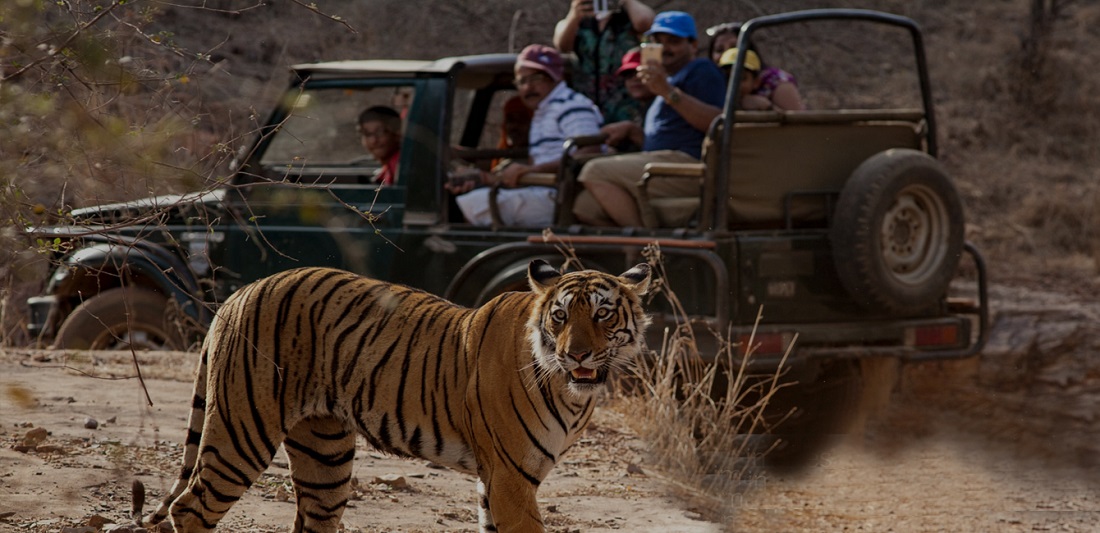Ranthambore National Park indeed holds a significant place in the realm of tiger conservation. Located in the state of Rajasthan, India, Ranthambore is renowned for its population of Royal Bengal Tigers, one of the most majestic and iconic big cats on the planet. The park’s landscape with its mix of dry deciduous forests, rocky terrain and ancient ruins provides an ideal habitat for these magnificent creatures. Beyond tigers, Ranthambore is also home to a diverse array of flora and fauna, including leopards, sloth bears, crocodiles and various species of birds. The park’s historical significance adds another layer of intrigue with the ruins of Ranthambore Fort adding to its allure. Visiting Ranthambore offers not only the chance to witness these majestic creatures in their natural habitat but also an opportunity to appreciate the importance of conservation efforts in preserving our planet’s biodiversity.
Early History of Ranthambore National Park
Ranthambore’s history dates back centuries with its name derived from the ancient Ranthambore Fort which dominates the landscape. The fort believed to have been built in the 10th century, served as a strategic stronghold for various rulers over the centuries. It was under the control of the Chauhan dynasty until the 13th century when it came under the rule of the Delhi Sultanate. Later, it passed into the hands of the Mughals and eventually the British. In 1955, Ranthambore was established as the Sawai Madhopur Game Sanctuary covering an area of approximately 400 square kilometers. It was declared a national park in 1980 expanding to its current size of around 1,334 square kilometers. Ranthambore is famous for its population of Royal Bengal Tigers and has been a prominent site for tiger conservation efforts in India.
Ecological diversity of Ranthambore National Park
The predominant habitat in Ranthambore, dry deciduous forests, feature trees like dhok, mangoand banyan. These forests shed their leaves during the dry season, providing a unique backdrop for wildlife sightings. Scattered throughout the park, open grasslands provide feeding grounds for herbivores like spotted deer, sambar deer and nilgai. These areas also offer opportunities for birdwatching, with species such as the Indian roller and painted stork often seen here. Ranthambore’s landscape is dotted with rocky outcrops and cliffs, offering shelter to various wildlife species. Tigers are known to utilize these rocky areas for resting and as vantage points for hunting. The park features several lakes, ponds, and streams, which are essential water sources for wildlife especially during the dry season. These water bodies attract a diverse range of bird species, including kingfishers, herons and cormorants.
Jeep Safari-Related Things to Know for Ranthambore National Park
- Jeep Safari in Ranthambore are popular and limited in number especially during peak seasons. It is advisable to book your safari well in advance either through our official website or by taking assistance from our safari operators.
- Ranthambore National Park has multiple entry gates and the availability of safari slots may vary depending on the gate. The main entry gates include the Sawai Madhopur Gate, the Khem Villas Gate, and the Sherpur Gate. Research the gates and choose one based on your preferences and convenience.
- The park offers both morning and afternoon Jeep Safaris. The timings vary depending on the season due to daylight hours and wildlife activity. Typically, morning safaris start early around sunrise and afternoon safaris begin in the late afternoon ending before sunset. Check the current timings and adhere to them to avoid any inconvenience.
- A typical Jeep Safari in Ranthambore lasts for around 3 to 4 hours, including travel time to and from the park entrance. Plan your schedule accordingly and be prepared for an immersive wildlife experience within this timeframe.
- Jeep Safaris accommodate a limited number of passengers per vehicle, usually around 6 individuals. Ensure you book your safari tickets for the appropriate vehicle size based on your group size.
- Each Jeep Safari is accompanied by a knowledgeable guide and an experienced driver. They will provide insights into the park’s wildlife, history and preservation efforts while ensuring your safety during the safari.
- While Ranthambore is renowned for its tiger population, wildlife sightings are never guaranteed. Be patient and attentive during the safari keeping your eyes peeled for various species of mammals, birds and reptiles that inhabit the park.
- Dress comfortably for the weather conditions, considering that safaris often involve exposure to sunlight and dust. Bring along essentials such as sunscreen, a hat, sunglasses, insect repellent and a camera to capture memorable moments.
